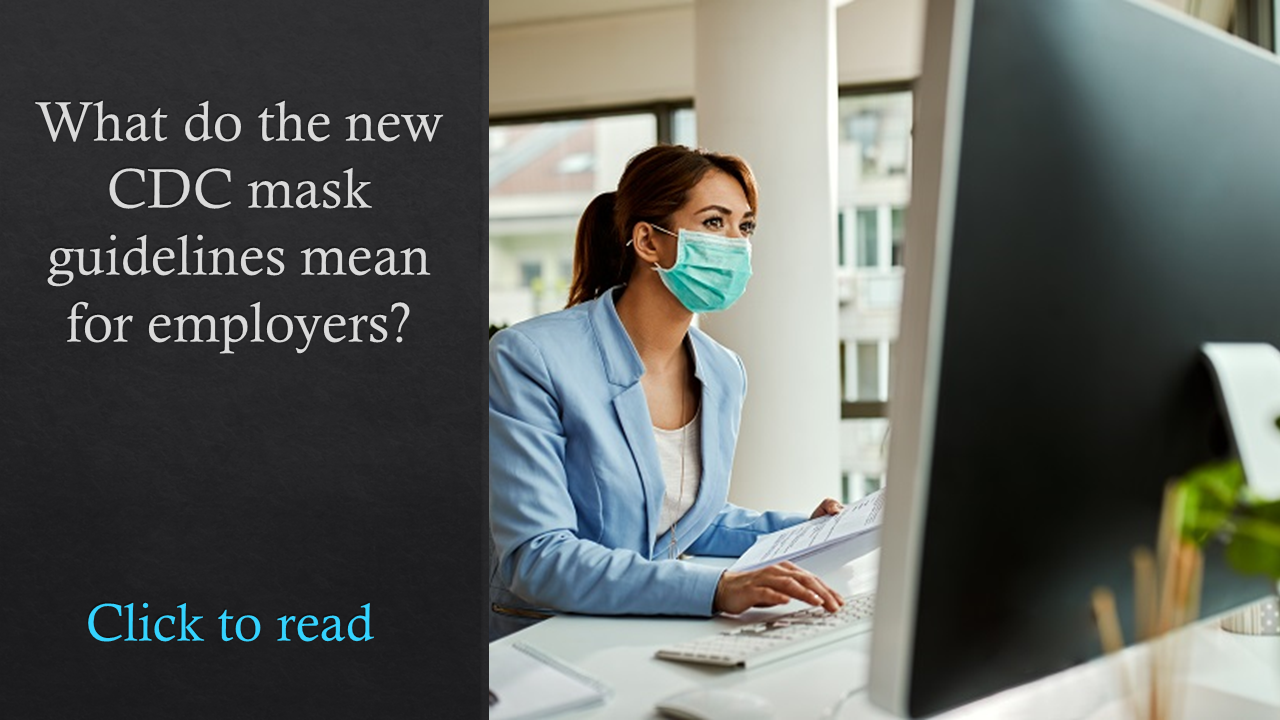Scores of research have found that employee anxiety over a potential return to the workplace is exploding. Employees are concerned about caregiving responsibilities that may impede their ability to return to an office. They’re worried over yet another life transition during a hectic, stressful and tumultuous year. And of course, they’re concerned about COVID-19 exposure and risk when heading back to the workplace.
And after the Centers for Disease Control & Prevention released new guidance allowing vaccinated people to go maskless—and in theory, unvaccinated people, too, since no proof is required—that anxiety is reaching new heights, especially when it comes to thinking about returning to an office full of maskless colleagues.

Joe Grasso of Lyra
“You think about the past year, it’s one adjustment after another after another after another. Here’s the most recent dramatic adjustment we’re asking people to make. That’s inherently stressful,” says Joe Grasso, Ph.D., director of workforce mental health for Lyra Health and a licensed clinical psychologist. “The ability for people to go maskless, that is going to be an extra layer of adjustment, especially for people who are extra-vigilant about their precautions. You’re layering stress.”
Although the new mask guidance is a relief for some—signaling a return to normalcy and the end of the pandemic—for many others, it represents heightened risks they don’t want to take. That’s particularly true for people who have been vigilant over the last year, those who strictly followed health guidelines, those who have health vulnerabilities or chronic conditions, or those who are parents or caregivers.
Also see: COVID-19 PPE is now HSA, FSA eligible
“For those with young children who cannot receive the vaccination or those who are immunocompromised, the loosened restrictions may have brought about an increase in feelings of anxiety or fear,” adds Rachel O’Neill, Ph.D., Talkspace therapist. “Even those who are vaccinated may still experience fear and concern about their safety in situations where there are a large number of unmasked individuals.”
 The new CDC guidance also marks a shift in routine and a loss of control, Grasso says, both of which tend to increase angst. The updates also add a challenge because they are based on an honor system—no one knows who is or is not vaccinated.
The new CDC guidance also marks a shift in routine and a loss of control, Grasso says, both of which tend to increase angst. The updates also add a challenge because they are based on an honor system—no one knows who is or is not vaccinated.
“For many, it’s uncomfortable because there’s been such a shift in routine and behavior—the mask is now an automatic part of our routine. Before we leave the house, we put on the mask. So for those individuals, not having a mask might be really anxiety-provoking—they might feel there is risk involved,” he says. “There may be concern about folks who are not vaccinated and not being able to tell. No one is checking who’s vaccinated and who’s not, so it’s going to be anxiety-provoking.”
Keys for employers and HR leaders
Bottom line? The updated mask guidance means a troubling transition for many employees—and one that employers need to address.
Experts recommend that employers step up in several ways, including these three areas:
- Touting mental health resources;
- Communicating about the mask changes; and
- Continuing to enforce health and safety protocols in the office if they’re making employees return.
“Employers need to recognize that in any transition, mental health will be impacted, so keep mental health in the spotlight,” Grasso says. For any employees—even those continuing to work remotely—communicating about the CDC mask guidance is a must. If nothing else, the pandemic has convinced smart employers and company leaders of the need to overcommunicate and get involved in world events and news that affects workers. The new mask guidance is no exception.
“Simple acknowledgments are important—‘This is yet another adjustment, you may find this stressful, remember our resources around mental health, remember you can talk to your manager if you have concerns, HR is available,’” he says. “Constantly reiterate that you know mental health can be affected and resources are available—they include [your] benefits, but also [mention] people employees can talk to in the organization, like their manager, like HR.”
 When it comes to returning to the workplace, anxiety over maskless coworkers or customers is only natural, even likely, says O’Neill. That’s especially true when situations feel out of their control. Being at work or around large groups of unmasked people and not knowing whether they’ve been vaccinated, for example. “Simply being vaccinated doesn’t mean that an individual can suddenly unload all of the fear they have carried the past year,” she says. “Many folks will need time to readjust to pre-pandemic levels of comfort with being in social situations.”
When it comes to returning to the workplace, anxiety over maskless coworkers or customers is only natural, even likely, says O’Neill. That’s especially true when situations feel out of their control. Being at work or around large groups of unmasked people and not knowing whether they’ve been vaccinated, for example. “Simply being vaccinated doesn’t mean that an individual can suddenly unload all of the fear they have carried the past year,” she says. “Many folks will need time to readjust to pre-pandemic levels of comfort with being in social situations.”
Related: How return-to-workplace worries are affecting employee mental health
That’s why one of the best things employers can do is be extremely clear about what health and safety guidelines they’re still following and how they intend to keep workers safe.
“One of the things that helps reduce anxiety about decisions that affect workers from a health and safety standpoint is a really clear explanation of, ‘This is what’s expected of you, this is what’s expected of your colleagues, this is the rationale for why our policy is the way it is,’” Grasso says. “[Tell them], ‘This is what we’re doing as a company for your health and wellness.’”
Otherwise, he says, people will fill in the blanks on their own. “And they’re often going to fill in the blanks with worst-case scenarios, what-ifs, or negative bias.”
Lyra is advising employers to spell out the protocol carefully, he says, and if they’re allowing vaccinated employees to enter the workplace without masks, they might want to ask for proof of vaccination to ease anxiety for many workers.
Also important? Be flexible and try to accommodate individuals based on their comfort level. Ask questions, O’Neill says, like these:
- Are there options to continue working remotely?
- Can employees be given flexibility about how and when they return to an in-person setting?
- Instead of organizing large-scale company events, is it possible to have smaller meetings to provide a greater sense of comfort for employees?
“To the extent possible,” she says, “employers and HR leaders should try to give their employees options for how they navigate back to in-person work situations.”